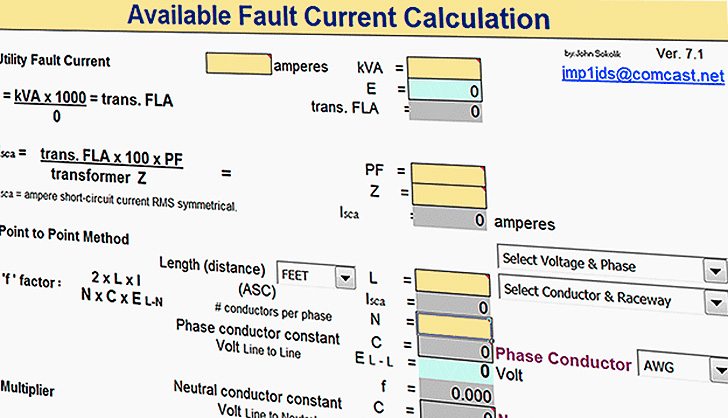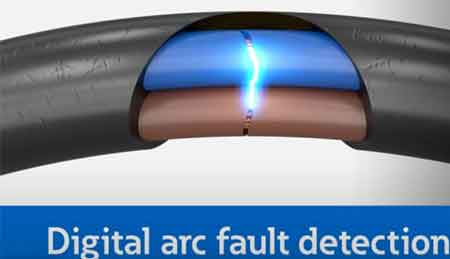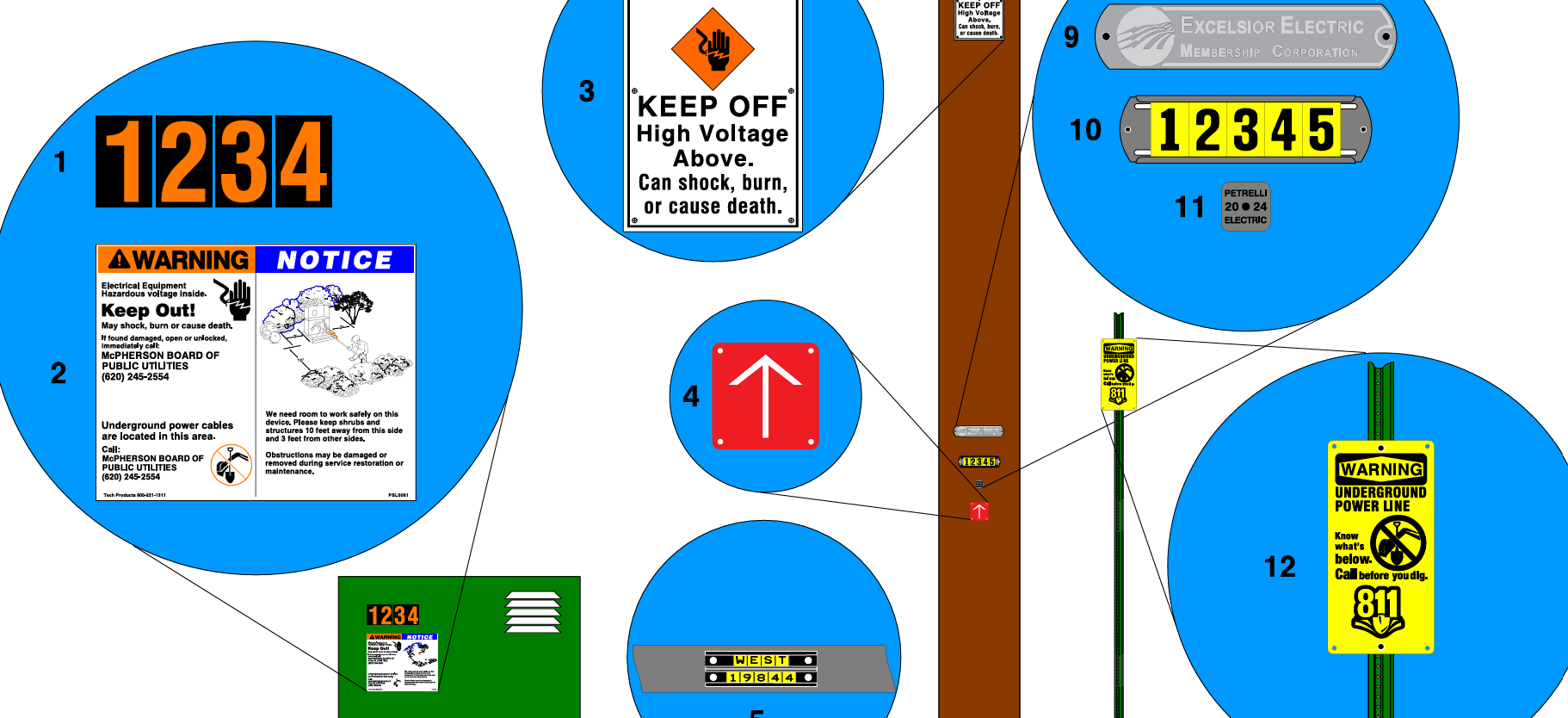Available Fault Current Explained

Protective Relay Training - Basic
Our customized live online or in‑person group training can be delivered to your staff at your location.

- Live Online
- 12 hours Instructor-led
- Group Training Available
Download Our OSHA 3875 Fact Sheet – Electrical PPE for Power Industry Workers

- Follow rules for rubber gloves, arc-rated PPE, and inspection procedures
- Learn employer obligations for testing, certification, and training
- Protect workers from arc flash and electrical shock injuries
Available fault current refers to the maximum short-circuit current at a specific system point. It depends on transformer size, conductor impedance, and system capacity, and must be calculated for electrical safety, code compliance, and protective device coordination.
What is Available Fault Current?
Available fault current, often referred to as fault current AFC, is a critical aspect of electrical system design and safety.
✅ Ensures proper protective device selection and coordination
✅ Supports compliance with electrical safety standards and NEC requirements
✅ Reduces risk of arc flash, equipment failure, and hazards
It represents the maximum current that can flow during a short circuit or electrical short circuit. A proper understanding of available fault current is essential for ensuring that circuit breakers and other protective devices are correctly rated and can safely interrupt the fault without causing damage to the electrical equipment. In this article, we will discuss how to calculate fault current, its importance for safety, and its role in compliance with electrical standards.
Request a Free Electrical Protection Training Quotation
What is available fault current, and why is it important?
Available fault current is the highest current that can flow at a specific point in an electrical system, typically at the service equipment or secondary terminals of a utility transformer. It is essential because it determines the interrupting capacity that protective devices, like circuit breakers, must have to safely handle short circuit conditions. If a protective device has an equipment rating lower than the maximum fault current, it may fail during a short circuit, leading to catastrophic damage, such as arc flash incidents, and increased risks for personnel and property.
How to Calculate Available Fault Current
Fault current calculation begins by identifying key factors, such as transformer size, system voltage, and impedance values. The utility transformer impedance and the distance between the transformer and the load affect the total impedance in the circuit, which in turn determines the available fault current.
Electricity Today T&D Magazine Subscribe for FREE

- Timely insights from industry experts
- Practical solutions T&D engineers
- Free access to every issue
At its core, calculating the maximum available fault current involves dividing the system voltage by the total system impedance. Additional considerations include measuring interrupted current at different points in the system, such as at the secondary terminals of transformers or at service equipment.
Table: Example Available Fault Current Calculations
| Transformer Size (kVA) | System Voltage (V) | Impedance (%) | Calculated Fault Current (A) |
|---|---|---|---|
| 500 kVA | 480 V | 5% | 12,020 A |
| 750 kVA | 480 V | 5% | 18,030 A |
| 1000 kVA | 480 V | 5% | 24,040 A |
| 1500 kVA | 480 V | 5% | 36,060 A |
Note: Fault current is calculated using the basic formula:
Fault Current (A) = (Transformer kVA × 1000) ÷ (√3 × Voltage × Impedance % ÷ 100)
Safety Risks of High Fault Current
High available fault current poses serious risks, including arc flash hazards, equipment damage, and fires. When a short circuit occurs in a system with high fault current, the energy released can generate intense heat, pressure, and light, resulting in arc flash events that pose a significant danger to workers.
If protective devices such as circuit breakers are not properly rated, they may fail under high fault current conditions. Such failures increase the likelihood of catastrophic equipment damage and extended downtime. Properly assessing available fault current is critical to safeguarding workers and maintaining system integrity.
Impact on Protective Device Selection
The calculation of fault current is crucial for selecting the appropriate protective devices. Circuit breakers and fuses must have an interrupting capacity greater than the maximum available fault current that can occur. If the interrupted current exceeds the device rating, the breaker may fail to trip, leaving the system exposed to dangerous high currents.
Accurate current assessments ensure that short circuits can be safely interrupted. This not only protects personnel but also minimizes system damage and reduces downtime.
Compliance with Electrical Safety Standards
Available fault current also plays a key role in regulatory compliance. The National Electrical Code (NEC), particularly Section 110.24, requires that service equipment be labeled with the calculated interrupted current. This ensures that equipment is properly rated for the conditions in which it operates.
Short circuit calculations must be performed for both new installations and when modifications are made to existing systems. Documenting these calculations is essential for meeting NEC requirements and ensuring ongoing safety compliance.
Understanding and calculating available fault current is vital for the safe operation of electrical systems. It determines the appropriate equipment rating for protective devices, ensures safety during short circuits, and supports compliance with standards such as the NEC. By performing accurate calculations and selecting properly rated equipment, operators can reduce risks such as arc flash events and equipment failures.
Frequently Asked Questions (FAQ)
What is available fault current?
It is the maximum short-circuit current present at a system point during a short circuit.
Why is available fault current important?
It ensures that protective devices are properly rated to interrupt short circuits, thereby reducing the risks of equipment failure and arc flash incidents.
How is available fault current calculated?
It is typically calculated by dividing the system voltage by the total system impedance, taking into account the transformer size, conductor impedance, and distance to the load.
Does the NEC require labeling?
Yes. Section 110.24 of the NEC mandates labeling of service equipment with available fault current for compliance and safety.
Related Articles








